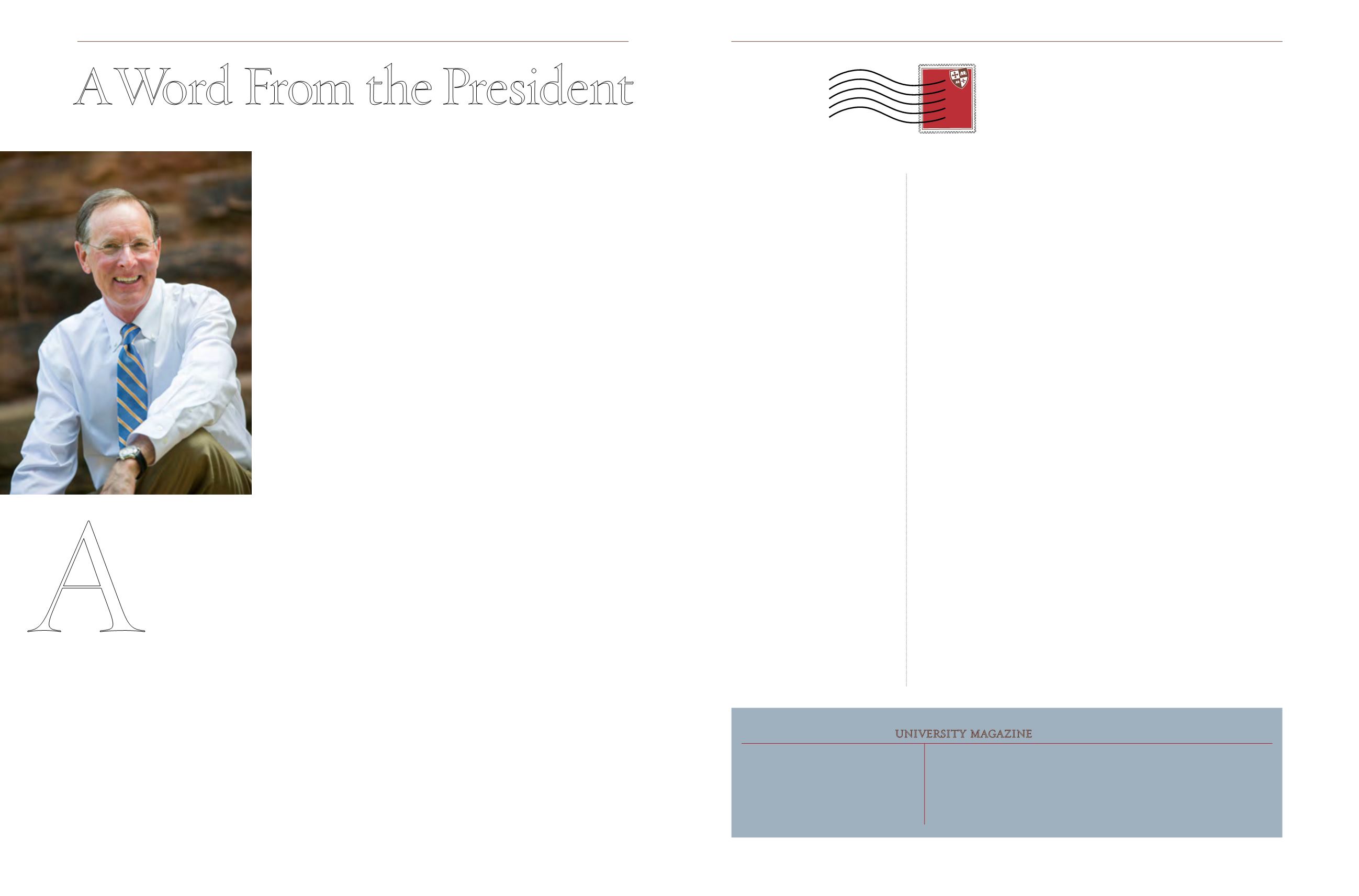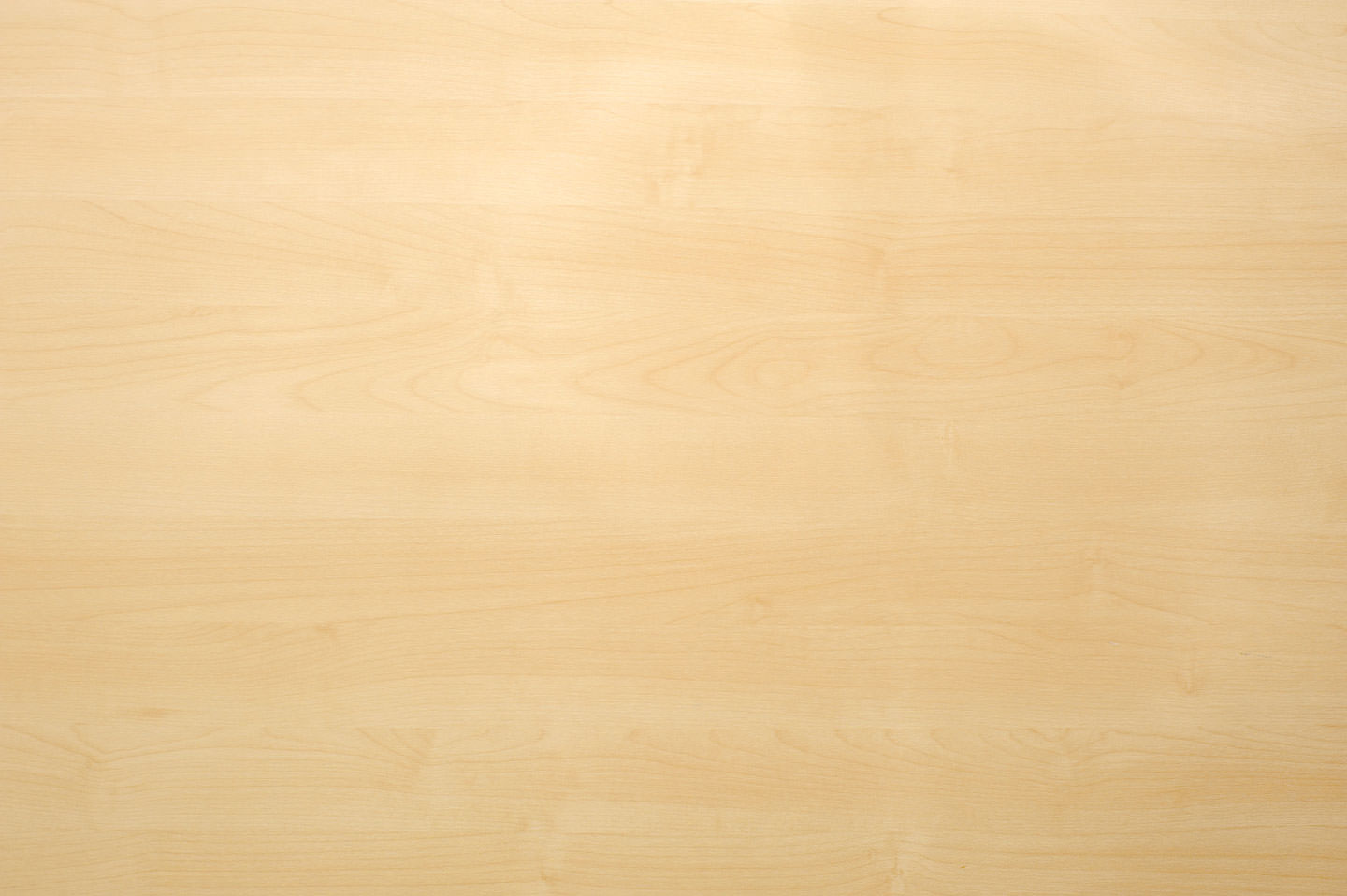

st. lawrence university magazine | winter 2015
2
3
bership in this group, her generosity might
have exceeded that of all others.
—The Rev. David S. Blanchard '80
Rochester, New York
Rev. Blanchard is associate minister at the
First Unitarian Church of Rochester.
Saint Lawrence pops up everywhere
I have an addition to “Saint Lawrence
Here, Saint Lawrence There” (Summer
2014, p. 12). In an article that appeared
in
The Hill News
in April 1952, I noted
a sighting in Yugoslavia: “In the ancient
town of Trogir, which centuries ago was
part of the Venetian empire, I suffered
a pang of homesickness as our guide
pointed out St. Lawrence Church in front
of which was a statue of the old boy being
roasted on the gridiron.”
—Rosalie Epstein Moriah '53
Jerusalem, Israel
Super (Bowl) Saint
My wife, Jane, and I got a good laugh
when we (read of ) the St. Lawrence
sighting in New Orleans (Fall 2014,
page 4). We were there for our niece’s
wedding last February and found the
St. Lawrence restaurant open on Super
Bowl Sunday. We also found the staff
knew nothing and cared little about
their namesake University and river
up north. We told them about the
gridiron.
Perhaps New Orleans alumni can
hold their next gathering there.
—Andy Sikorovsky '88
Shaker Heights, Ohio
Our first gender-neutral housing?
There have been great changes at SLU
since many of us arrived in the fall of
1945. With fewer men thanks to the war,
the University enrolled more women,
and put them in the Men's Res [today’s
Sykes Residence]. Partitions in the halls
kept the boys and girls apart. We did
stand in a cafeteria line together and eat
in the dining room. Second semester, the
women ate in Dean-Eaton, more suitable
for young ladies.
My roommate and I lived in the tower
room, a few steps up from the second-
floor hall. A large room, it had a walk-in
closet and footprints on the ceiling; we
were told they were left by Navy program
students. I had a boyfriend in the Navy;
I wonder what his shipmates thought
when my letters arrived from Men’s Res,
Canton, N.Y.
—Shirley Veen ’49
Hendersonville, North Carolina
On generosity
I applaud those who conceived of the newly
formed Laurentian Leadership Society
(Summer 2014), and commend those
whose level of charitable giving makes them
eligible for the benefits of membership.
Where would St. Lawrence be without such
loyal alumni?
My only concern has to do with describ-
ing them as
“
St. Lawrence
’
s most generous
donors.
”
The true measure of generosity has
little to do with the size of the gift. While
the
“
widow
’
s mite
”
(Mark 12:41-44)
would not have made her eligible for mem-
ST. LAWRENCE
university magazine
volume lxIV
|
number 1
|
2015
St. Lawrence University does not discriminate against students, faculty, staff or other beneficiaries on the basis of race, color, gender, religion, age,
disability, marital status, sexual orientation, or national or ethnic origin in admission to, or access to, or treatment, or employment in its programs
and activities. AA/EEO. For further information, contact the University’s Age Act, Title IX and Section 504 coordinator, 315-229-5656.
A complete policy listing is available at
www.stlawu.edu/policies.Published by St. Lawrence University four times yearly: January, April, July and October. Periodical postage is paid at Canton, NewYork 13617
and at additional mailing offices. (ISSN 0745-3582) Printed in U.S.A. All opinions expressed in signed articles are those of the author and do
not necessarily reflect those of the editors and/or St. Lawrence University. Editorial offices: Office of University Communications, St. Lawrence
University, 23 Romoda Drive, Canton, NY 13617, phone 315-229-5585, fax 315-229-7422, e-mail
nburdick@stlawu.edu, Web site
www.stlawu.eduAddress changes
A change-of-address card to Office of Annual Giving and Laurentian Engagement, St.Lawrence University, 23 Romoda Drive,
Canton, NY 13617 (315-229-5904, email
slualum@stlawu.edu)will enable you to receive St.Lawrence and other University mail promptly.
Editor-in-Chief
Neal S. Burdick ’72
assistant editor
Meg Bernier ’07, M’09
art director
Alex Rhea
associate art director
Susan LaVean
Design director
Jamie Lipps
photography director
Tara Freeman
News editor
Ryan Deuel
class notes editor
Sharon Henry
later I trembled to read a tribute that
recalled for me that anxious moment—
“as an academic unaware of any limits to
his own scholarship, he seemingly could
not comprehend that others, including
his colleagues, might not know as much
as he did.”
George Williams and I eventually
became friends, though he sometimes
called me by my middle name. I think he
preferred it because the name is Welsh,
which he could pronounce in that lan-
guage (and I couldn’t).
We had something else in common.
He was also a Laurentian, graduating in
1936. After his Canton years he studied in
Munich, Paris and Strasbourg, becoming
fluent in several languages, then earned
an American doctorate and began his
brilliant academic career, culminating
in being named the Hollis Professor of
Divinity at Harvard, the oldest endowed
chair in America.
And then, he revealed one day a detail
of his early life that has stayed with me
ever since as a significant parable. George
Huntston Williams was only a C student
at St. Lawrence.
The grade of C is not yet extinct, but
it has become rare. The dean at Harvard
College reported that the median student
grade was A-. At Yale, 62% of the grades
are in the A range. It’s much the same at
Princeton, where 90% of all grades are B
and above. In fairness to our Ivy League
accomplices, the grade of C and below has
been significantly diminished in all places,
St. Lawrence included. While this larger
bygone film called
The
Paper Chase
captivated
university audiences at
a time that stood be-
tween eras, the yet un-
named divide between
classical learning and
the post-modern shift.
The equivalent audio
moment was the tran-
sition between the soul of Marvin Gaye
and the disco of Barry White. Students
today, occasionally and curiously, show a
fondness, more like an unlived nostalgia
for the 1970s, the period of
The Paper
Chase
; this is similar, I suppose, to those
students of the ’70s becoming attached
to Bogart and memorizing all the scenes
in
Casablanca
.
The Paper Chase
is about the first-year
grind at Harvard Law School. It portrays a
sharp conflict of values in its storyline that
stretched apart two indomitable personali-
ties also held in thrall ambiguously, like
the mongoose and cobra. The stage is set
as a clash of wills between the intimi-
dating Professor Charles W. Kingsfield
and his unsubmissive, soul-searching
student, James Hart.
At another graduate school, close to
the one represented in the movie, and
certainly in the exact period of the story
and in an identical lecture hall, I was the
student of a real-life Professor Kingsfield.
George Huntston Williams was a world-
renowned historian of extraordinary range
and genius. Professor Williams looked
more “Kingsfield” than actor John House-
man. He had a leonine head, a depend-
ably florid face, piercing eyes of cobalt
beams, and the most impressive shock of
white hair. His lectures were best when
he misplaced his glasses, thus dispatching
the day’s notes to his leather briefcase;
then he would “channel” the narrative and
interpretation, not just the broad decades
of the 16th century, conveniently swept
into named brackets such as the Tudor
Dynasty. He would describe, instead, the
detail of actual years or a specific week in
a single year from five centuries ago with a
familiarity akin to what his students could
easily recollect about a special moment as
a sophomore in college.
George Williams taught history in the
grand style that no one today, and very
few in his day, could do or even attempt.
Students regarded him with esteem, won-
der and sometimes terror. For a Friday
discussion section, always led by an older
graduate student in the absence of the
professor, I was assigned to give a particu-
lar analysis of Williams’s own magiste-
rial scholarship, actually his best-known
book. Just as I began my presentation,
Professor Williams walked in unexpect-
edly and took a seat at the seminar table.
He listened intently, chin anchored upon
his chest, for the next 20 minutes, never
saying a word.
There were, naturally, questions posed,
difficult, perhaps impossible to touch or
grasp his meaning. I survived, but years
AWord From thePresident
A
Honoring the C-Student
pattern of college grading is probably
irreversible, it reveals an expectancy
of perfectionism that needs an oc-
casional rebalancing.
We have developed the perpetual
habit on our campuses, in our cul-
ture, in all the professions, of making
the acquisition of prizes, the grand
recognition of high achievement, and
the acing of the big test a matter of
ultimate significance. I am immensely
privileged to watch students every day
do extremely difficult things in thought
or performance, often with excellence.
Simply amazing. And yet, I also wonder
or worry that something has been lost
by dismissing the power of the C to
inspire, deepen determination, and
grant the profound realization that
it may be the best opportunity ever
extended. In no better way than earning
the undesirable C can someone discover
what can be accomplished in life before
anything that truly matters has been
accomplished anyhow.
There will be many instances in life
of earning a C, no matter what the
transcript recorded while in college.
We may take up a new sport or art,
which we will never master. We may
write a report for the office that is not
top-form. We may make a business de-
cision that yields middling to mediocre
results. Knowing and remembering the
lessons of the C student can be reassur-
ing. This is also a person who should
never be underestimated.
n
—WLF
In no better way than
earning the undesirable C
can someone discover
what can be accomplished
in life, before anything
that truly matters has been
accomplished anyhow.
,,
,,
Letters



















